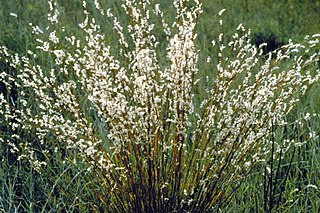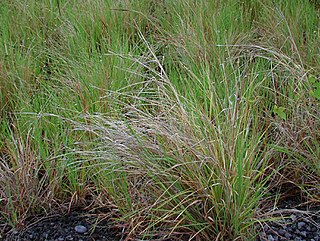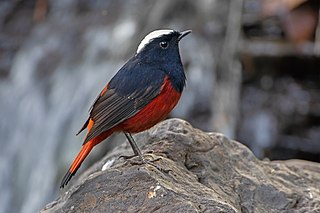
The common redstart, or often simply redstart, is a small passerine bird in the genus Phoenicurus. Like its relatives, it was formerly classed as a member of the thrush family, (Turdidae), but is now known to be an Old World flycatcher.

The black redstart is a small passerine bird in the genus Phoenicurus. Like its relatives, it was formerly classed as a member of the thrush family (Turdidae), but is now known to be an Old World flycatcher (Muscicapidae). Obsolete common names include Tithys redstart, blackstart and black redtail.

The white-breasted waterhen is a waterbird of the rail and crake family, Rallidae, that is widely distributed across South and Southeast Asia. They are dark slaty birds with a clean white face, breast and belly. They are somewhat bolder than most other rails and are often seen stepping slowly with their tail cocked upright in open marshes or even drains near busy roads. They are largely crepuscular in activity and during the breeding season, just after the first rains, make loud and repetitive croaking calls.

The Andropogoneae, sometimes called the sorghum tribe, are a large tribe of grasses (family Poaceae) with roughly 1,200 species in 90 genera, mainly distributed in tropical and subtropical areas. They include such important crops as maize (corn), sugarcane, and sorghum. All species in this tribe use C4 carbon fixation, which makes them competitive under warm, high-light conditions.

Barle Valley is a 1,540 acres (620 ha) Site of Special Scientific Interest within Exmoor National Park, situated in the counties of Devon and Somerset through which the River Barle flows. It was notified in its current form under the Wildlife and Countryside Act in 1988. The site includes the Somerset Wildlife Trust's Mounsey Wood Nature Reserve and the Knaplock and North Barton SSSI which has been notified since 1954.

Heteropogon contortus is a tropical, perennial tussock grass with a native distribution encompassing Southern Africa, southern Asia, Northern Australia, Oceania, and southwestern North America. The species has also become a naturalised weed in tropical and subtropical regions in the Americas and East Asia. The plant grows to 1.5 metres (4.9 ft) in height and is favoured in most environments by frequent burning. The plants develop characteristic dark seeds with a single long awn at one end and a sharp spike at the other. The awn becomes twisted when dry and straightens when moistened, and in combination with the spike is capable of drilling the seed into the soil.

Eversmann's redstart, also known as the rufous-backed redstart, is a passerine bird belonging to the genus Phoenicurus. It was formerly classified in the thrush family Turdidae but is now placed in the Old World flycatcher family Muscicapidae. It was described by the German biologist Eduard Friedrich Eversmann who is commemorated in the bird's English name.

The white-capped redstart or white-capped water redstart is a passerine bird of the Old World flycatcher family Muscicapidae native to the Indian Subcontinent,Southeast Asia, much of China, and to certain regions of Central Asia.

Phoenicurus is a genus of passerine birds in the Old World flycatcher family Muscicapidae, native to Europe, Asia and Africa. They are named redstarts from their orange-red tails. They are small insectivores, the males mostly brightly coloured in various combinations of red, blue, white, and black, the females light brown with a red tail. A molecular phylogenetic study published in 2010 led to a reorganization of the Old World flycatchers family in which the two species in Rhyacornis and the single species in Chaimarrornis were merged into Phoenicurus.

Güldenstädt's redstart also sometimes called the white-winged redstart, is a species of bird in the genus Phoenicurus, family Muscicapidae. It is found in the high mountains of the southwestern and central Palearctic in the Caucasus, Karakoram, Pamir, Himalaya, Tian Shan, and Altai, in the countries of Afghanistan, Armenia, Azerbaijan, Bhutan, China, Georgia, India, Iran, Kazakhstan, Mongolia, Nepal, Pakistan, Russia, Tajikistan, Turkmenistan, and Uzbekistan.

Heteropogon is a genus of annual and perennial plants in the grass family known generally as tangleheads, widespread primarily in tropical and subtropical regions.
Heteropogon macerinus is a species of robber flies in the family Asilidae.
Heteropogon is a genus of robber flies in the family Asilidae. There are at least 60 described species in Heteropogon.
Heteropogon duncani is a species of robber flies in the family Asilidae.
Heteropogon cirrhatus is a species of robber flies in the family Asilidae.
Heteropogon patruelis is a species of robber flies in the family Asilidae.
Heteropogon lautus is a species of robber flies in the family Asilidae.
Heteropogon spatulatus is a species of robber flies in the family Asilidae.
Heteropogon davisi is a species of robber flies in the family Asilidae.











